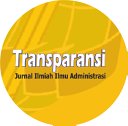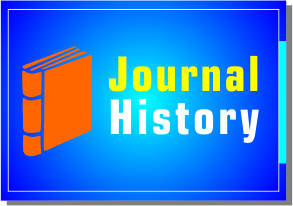Studi Implementasi Kebijakan Kota Layak Anak (KLA) di Kota Pekanbaru
DOI:
https://doi.org/10.31334/trans.v9i2.21Keywords:
The policy imlementation of children appropriate cityAbstract
The policy imlementation of children appropriate city known as (KLA) is intended as a real effort to unite children rights issues into the planning and construction of district / city. Children care development is basically a condition for the respect, protection and fulfillment of children's rights.
The policy imlementation of children appropriate city known as (KLA) in Pekanbaru has been launched through the establishment of the Task Force, but yet there appears to be a significant change. In general it can be said that the issue of Children has not been a priority in policy and budgeting in Pekanbaru city government and child protection movement has not been done optimally. The changes are not expected to be significant. This research is to know "why The policy imlementation of children appropriate city known as (KLA) in Pekanbaru is not optimal?
Obstacles in The policy imlementation of children appropriate city known as (KLA) in Pekanbaru are as follows: (1) Program KLA has not been popular in the levels SKPD in Pekanbaru and institutionally SKPD still egosektoral making it difficult to integrate the issue of Children in the preparation of programs on education, and also the preparation of RAD -KLA, (2) implementing inadequate institutional capacity. (3) The absence of a budget based on the needs of children in the budget, (4) Not to achieve a partnership between government, private sector, community organizations, and the community itself, including children, in realizing Pekanbaru into the City of Eligible Children in accordance with the indicators specified in Peraturan Menteri Negara PPPA RI No. 12 in 2011.
References
BPS Kota Pekanbaru. 2014.
Data KLA, 2014
Hamid Patilima. 2004. Persepsi Anak Mengenai Lingkungan Kota Studi Kasus di Kelurahan Kwitan. Jakarta Pusat (Tesis). Jakarta: Pasca Sarjana UI, Kajian Pengembangan Perkotaan.
Hamid Pattilina. 2008. Kota Layak Anak, http://www.ykai.net/index.php?view=artikel&id=97:kota-layak-anak.
LAKIP KPP-PA, 2013
Mahjubah Magazine. 1993. Pendidikan Anak Sejak Dini Hingga Masa Depan. Jakarta: CV. Firdaus.
Naning Pudjijulianingsih. 2009. Meningkatkan IPM Melalui Perwujudan Kabupaten/Kota Layak Anak (makalah)
Panduan Kebijakan Pengembangan Kota Layak Anak, Kementerian Pemberdayaan Perempuan Republik Indonesia. Tahun 2006.
Peraturan Menteri Negara Pemberdayaan Perempuan dan Perlindungan Anak Republik Indonesia Nomor 11 tahun 2011 tentang Kebijakan Pengembangan Kabupaten/Kota Layak Anak
Peraturan Menteri Negara Pemberdayaan Perempuan dan Perlindungan Anak Republik Indonesia Nomor 12 tahun 2011 tentang Indikator Kabupaten/Kota Layak Anak
Peraturan Menteri Negara Pemberdayaan Perempuan dan Perlindungan Anak Republik Indonesia Nomor 13 tahun 2011 tentang Panduan Pengembangan Kabupaten/Kota Layak Anak (KLA)
Peraturan Menteri Negara Pemberdayaan Perempuan dan Perlindungan Anak Republik Indonesia Nomor 14 tahun 2011 tentang Panduan Evaluasi Kabupaten/Kota Layak Anak.
Riant Nugroho. 2009. Public Policy. Jakarta: PT. Gramedia.
Siti Malaiha Dewi. 2011. Transformasi Kudus Sebagai Kota Layak Anak (Tinjauan Atas Pemenuhan Hak Sipil dan Partisipasi) (Jurnal “Muwazah†vol.3 No.1).
Subarsono. 2012. Analisis Kebijakan Publik. Yogyakarta: Pustaka Pelajar.
Sugitono. 2005. Memahami Penelitian Kualitatif. Bandung: Alfabeta.
WJS. Poedarminta. 1992. Kamus Umum Bahasa Indonesia. Jakarta: Balai Pustaka.
http://www.pekanbarumx.co/baca/1322/alamak-pekanbaru-darurat-anak.html
http://www.riauindikator.com/2432/aneh-pekanbaru-terima-penghargaan-kota-layak-anak-.html
Downloads
Published
Issue
Section
License

This work is licensed under a Creative Commons Attribution-ShareAlike 4.0 International License
Please find the rights and licenses in Transparansi : Jurnal Ilmiah Ilmu Administrasi By submitting the article/manuscript of the article, the author(s) agree with this policy. No specific document sign-off is required.
- License
The commercial use of the article will be governed by the Creative Commons Attribution license as currently displayed on Creative Commons Attribution-ShareAlike 4.0 International License.
2. Author(s)' Warranties
The author warrants that the article is original, written by stated author(s), has not been published before, contains no unlawful statements, does not infringe the rights of others, is subject to copyright that is vested exclusively in the author and free of any third party rights, and that any necessary written permissions to quote from other sources have been obtained by the author(s).
3. User Rights
Transparansi : Jurnal Ilmiah Ilmu Administrasi spirit is to disseminate articles published are as free as possible. Under the Creative Commons license, Transparansi : Jurnal Ilmiah Ilmu Administrasi permits users to copy, distribute, display, and perform the work for non-commercial purposes only. Users will also need to attribute authors and Transparansi : Jurnal Ilmiah Ilmu Administrasi on distributing works in the journal and other media of publications.
4. Co-Authorship
If the article was jointly prepared by more than one author, any authors submitting the manuscript warrants that he/she has been authorized by all co-authors to be agreed on this copyright and license notice (agreement) on their behalf, and agrees to inform his/her co-authors of the terms of this policy. Transparansi : Jurnal Ilmiah Ilmu Administrasi will not be held liable for anything that may arise due to the author(s) internal dispute. Transparansi : Jurnal Ilmiah Ilmu Administrasi will only communicate with the corresponding author.
5. Miscellaneous
Transparansi : Jurnal Ilmiah Ilmu Administrasi will publish the article (or have it published) in the journal if the article’s editorial process is successfully completed. Transparansi : Jurnal Ilmiah Ilmu Administrasi editors may modify the article to a style of punctuation, spelling, capitalization, referencing and usage that deems appropriate. The author acknowledges that the article may be published so that it will be publicly accessible and such access will be free of charge for the readers as mentioned in point 3.
Every accepted manuscript should be accompanied by "Copyright Transfer Agreement"prior to the article publication.











